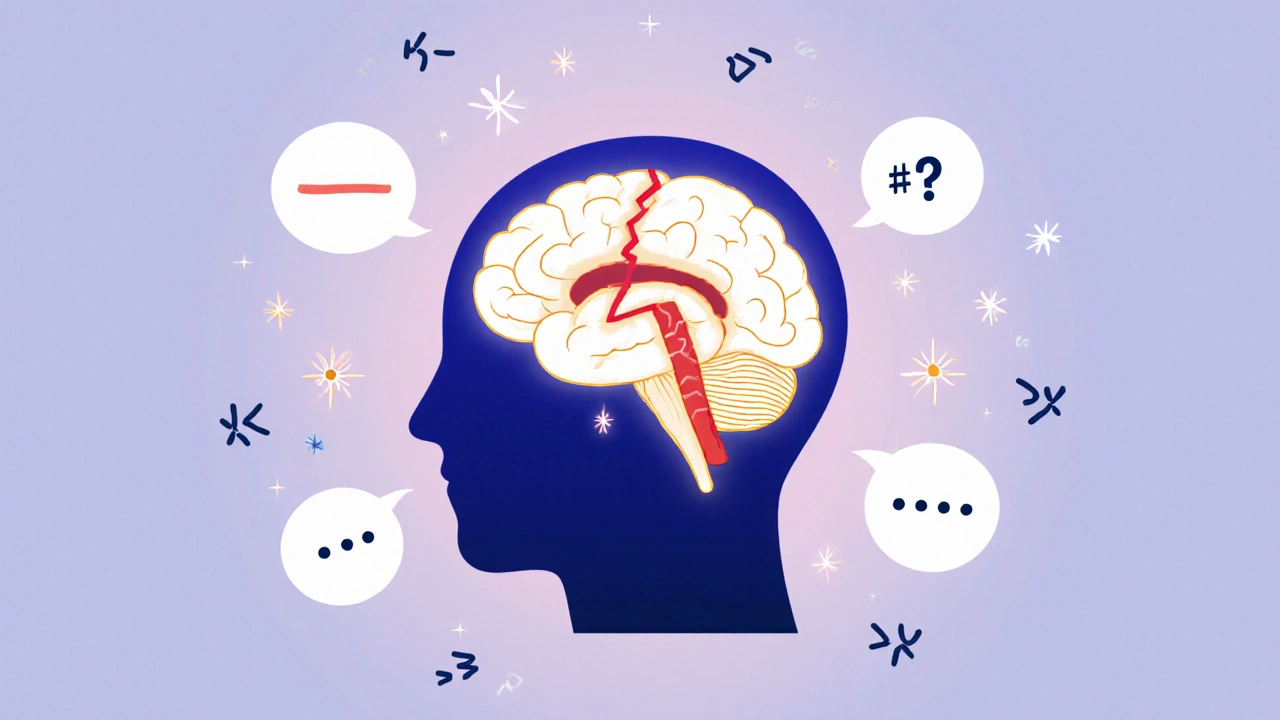When working with speech therapy, a specialized rehabilitation process that improves speech, language, and communication skills. Also known as speech-language therapy, it often involves a speech‑language pathologist, a trained professional who assesses and treats communication disorders and targets conditions like aphasia, language loss after brain injury or stroke or stuttering, a fluency disorder marked by repetitions and blocks. The core goal is to restore or enhance the ability to convey thoughts clearly, whether through spoken words, gestures, or technology.
One of the most common tools in speech therapy is articulation training, which breaks down sounds into manageable parts and practices them in isolation before blending them into words and sentences. Therapists also use augmentative and alternative communication (AAC) devices—simple picture boards or high‑tech speech‑generating apps—to give a voice to those who cannot produce speech reliably. These methods intersect: a child learning to pronounce “s” may use a picture card to express the word while the therapist monitors progress. In addition, language‑rich activities such as storytelling, role‑play, and reading aloud strengthen comprehension and expression, linking back to the central aim of improving functional communication.
Evaluation is the first step. A speech-language pathologist conducts a comprehensive assessment that includes case history, oral‑motor exam, and standardized language tests. This data creates a personalized plan that outlines target skills, frequency of sessions, and measurable milestones. For adults recovering from stroke, the plan might prioritize word‑finding strategies and conversational practice, while for children with developmental delays, the emphasis could be on phonological awareness and social use of language. Progress is tracked through regular re‑evaluations, ensuring that therapy adapts to the client’s evolving needs.
Disorders addressed in speech therapy span a wide spectrum. Apart from aphasia and stuttering, therapists work with apraxia of speech (a motor planning disorder), dysarthria (muscle weakness affecting speech), voice disorders, and language impairments linked to autism or hearing loss. Each condition demands a tailored approach: apraxia may rely heavily on repetitive motor sequencing, while voice therapy focuses on breath support and vocal fold health. By categorizing the disorder and selecting evidence‑based techniques, speech therapy maximizes the chance of real‑world improvement.
The settings for therapy are equally diverse. Schools embed speech services within individualized education programs, offering daily pull‑out sessions for students who need intensive support. Clinics provide one‑on‑one or group work, often integrating multidisciplinary teams. Telepractice has surged, allowing clients in remote areas to connect with a pathologist via video calls, share real‑time audio samples, and receive homework assignments digitally. Technology, from apps that track pronunciation accuracy to virtual reality environments that simulate social conversations, is reshaping how therapy is delivered and measured.
Benefits extend beyond the clinic door. Children who master articulation see better academic performance and peer relationships; adults who regain language skills can return to work and enjoy richer social lives. Research shows that early intervention—ideally before the age of five—yields the strongest outcomes, but improvement is possible at any age with consistent practice. Whether you’re a parent, a teacher, or a survivor of a neurological event, understanding the fundamentals of speech therapy empowers you to advocate for the right services and stay engaged in the recovery journey.
Below you’ll find a curated collection of articles that dive deeper into specific drugs, health conditions, and therapeutic strategies related to communication and overall wellness. Use these resources to expand your knowledge, compare treatment options, and discover practical tips you can apply right away.
Posted by
Jenny Garner
7 Comments

Explore how stroke impacts speech, language, and communication, learn to recognize aphasia, dysarthria, and apraxia, and discover practical therapy steps for recovery.
read more